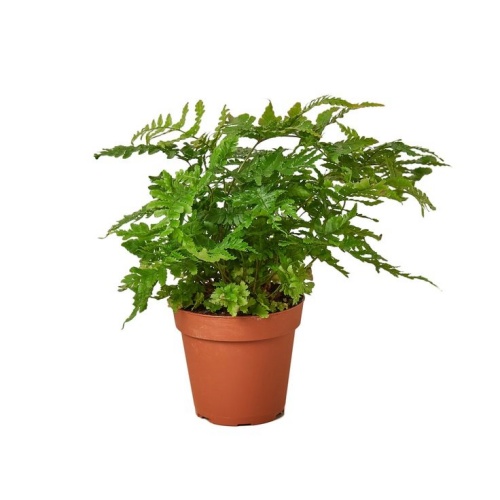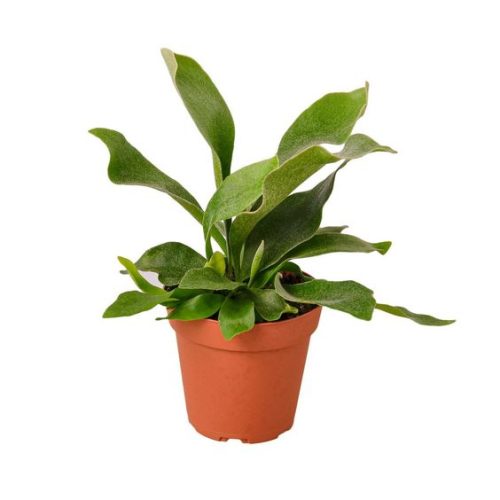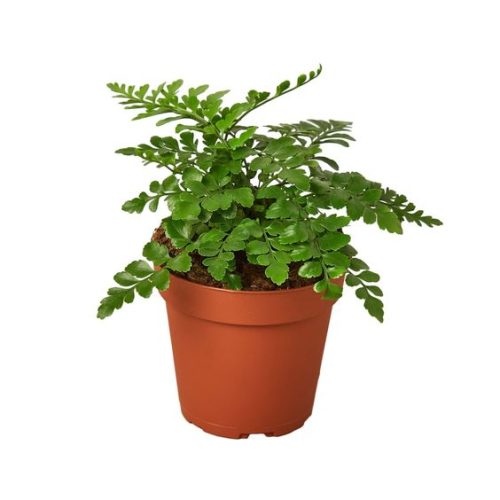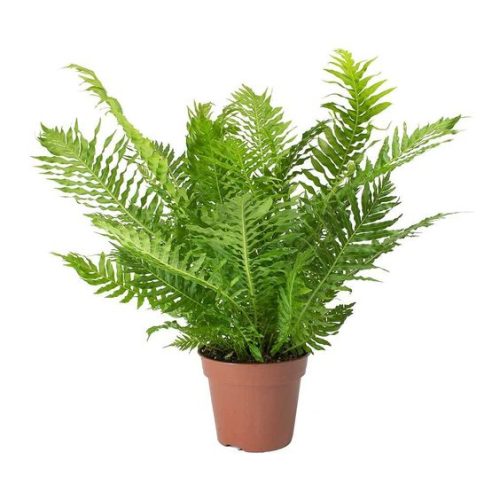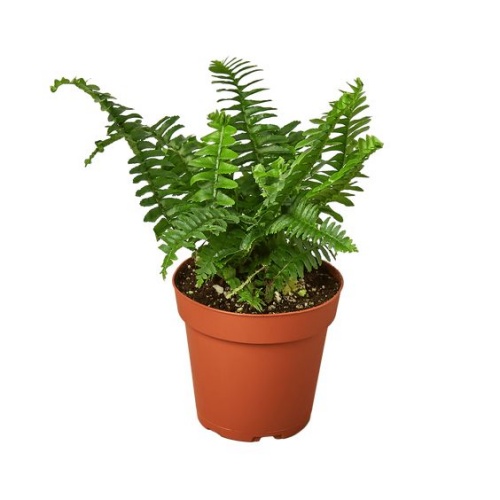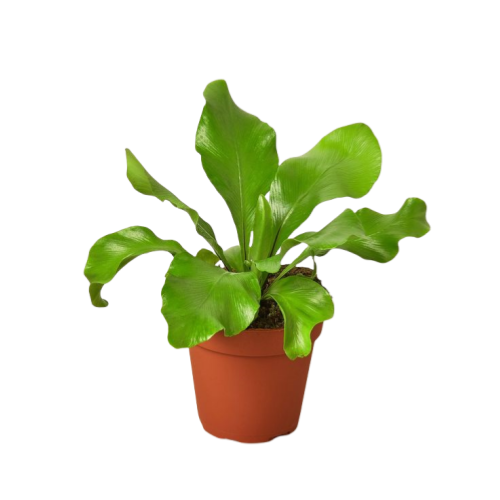Acha anụnụ anụnụ kpakpando fern
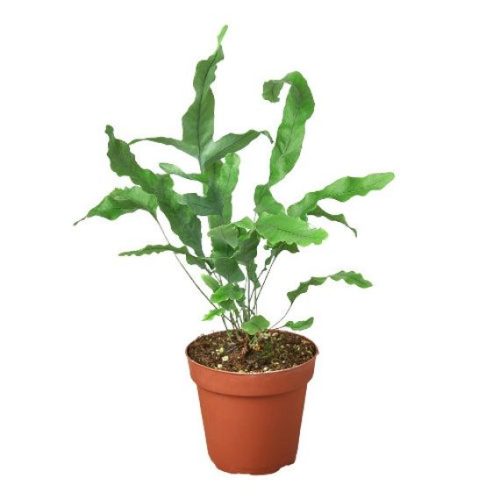
- Botanical Name: Phlebodium augum
- Family Name: Polypodiaciaceace
- Ị ga: 1-3 Inches
- Okpomoku: 5℃-28℃
- Other: Shade tolerant, warmth, not cold resistant, prefers humidity
Nlebazi anya
Nkọwa nke ngwaahịa
Royal Fern Dominion: The Blue Star’s Sublime Habitat
Blue Star Fern Fernview
Oseihe nwaanyi Acha anụnụ anụnụ kpakpando fern, nke sayensi amaara dị ka akụkụ nke ezinụlọ polypodiaceene na nke Phlebodium Phlesdium, nke a morphology ya dị iche iche. A na-eji akara ngosi ya dị mma, na-enye ha mkpụrụ osisi na-acha odo odo. N'ala na oke ohia nke South America, a na-enwekarị ụdị ndụ a na gburugburu iru mmiri ma ọ bụghị ụkọ. Ọ nwere ike imeghari ọnọdụ ọkụ dị ala mana ọ na-eto nke ọma n'okpuru, na-agbanyụ ọkụ.
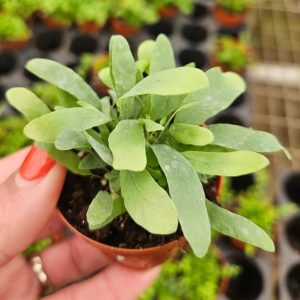
Acha anụnụ anụnụ kpakpando fern
Ezigbo ọnọdụ ọkụ
The Blue Star Fern prefers to be placed near east or south-facing windows, where it can enjoy the soft morning sunlight followed by bright, diffused light for the remainder of the day. Direct strong light, such as midday sun during summer, can scorch the fronds, leading to curling, scorching, and yellowing. Conversely, insufficient light can result in slow growth, legginess, and reduced new leaf size and vibrancy. As seasonal light conditions change, it’s important to adjust the plant’s location to avoid harsh direct sunlight in summer while ensuring it receives ample light during winter months. Regularly rotating the plant ensures even growth as it basks in the light.
Ọnọdụ okpomọkụ
Fern a na-enwe obi ụtọ na-ekpo ọkụ ma ọ bụghị ntu oyi na-anagide. Ọ na-eto nke ọma na gburugburu na-edobe n'etiti 15-28 ogo Celsius. Ọ bụrụ na okpomọkụ na-agbada dị ala, ihe ọkụkụ ahụ nwere ike ịbanye na steeti dormant, nwere ike na-eduga na akwukwo mbepu. Iji chekwaa ahụike kachasị mma na nke anya, a na-atụ aro ka ọ dobe kpakpando kpakpando na-acha anụnụ anụnụ n'ime oge oyi. Ọnọdụ okpomọkụ ekwesịghị ịda n'okpuru Celsius 5, dị ka ihu igwe na-ajụ oyi nwere ike imebi osisi na-ekpo ọkụ. Nlekọta ime ụlọ n'oge oyi dị mkpa, a ga-ewepụ osisi ahụ na ikuku ikuku ma ọ bụ arịa ọkụ iji gbochie mgbanwe okpomọkụ.
Iru mmiri na atọ
Originating from the damp rainforests of South America, the Blue Star Fern favors moist conditions and is prone to drying out. During spring and summer, the soil should be kept lightly moist, while in autumn and winter, it is sufficient to water once the topsoil is completely dry. It’s crucial to use well-draining, breathable pots and soil to prevent waterlogging, which can lead to root rot. When watering, always check the soil’s moisture level with your finger or a tool before hydrating; never water on a whim. Ensure that the pot you use has good drainage and breathability, as some pots or saucers may not have drainage holes. In the heat of summer, regular misting of the leaves can be beneficial. The plant should be situated in a well-ventilated environment, as ventilation significantly affects the evaporation rate of soil moisture.
Iru mmiri
Fers niile na-ahọrọkarị iru mmiri dị elu, mana kpakpando na-acha anụnụ anụnụ adịghị achọ. Ọdịmma nkịtị na ogige iru mmiri na-ezukarị maka uto ya. Ọ bụrụ na iru mmiri amịrị abụ erughị 40%, karịsịa ke ọkọchị ọnwa oyi, mmiri a na-akụ ya ugboro ugboro ma ọ bụ alụlụ gburugburu akwụkwọ iji kwụọ ụgwọ mmiri.
Ndụmọdụ maka ịkwalite iru mmiri
– Utilize a humidifier, taking care to mist around rather than directly on the leaves, lightly spraying the plant’s surroundings or above it.
– Group plants that prefer high humidity together to create a micro-humid zone.
– Create a DIY humidifier by placing a shallow tray with pebbles or another medium, filling it with water so that it covers half the medium, and placing the pot on top, ensuring the pot is not submerged in water. The natural evaporation will help maintain humidity.
Oriri
The Blue Star Fern does not have a high demand for fertilizer. Moderate fertilization is sufficient. During the spring and summer growing seasons, apply a balanced, water-soluble fertilizer at half strength once a month. Fertilizing can be halted in winter when the plant’s growth slows down due to low temperatures, as fertilizing then could burn the roots.
Ndụmọdụ Fertilization
– If the plant is in the right environment and shows significant leaf growth, supplemental fertilizer can be beneficial.
– If you’ve used fresh soil with added base fertilizer, no additional fertilization is needed.
– Remember, more is not always better; over-fertilizing can harm the root system due to fertilizer buildup.
Ventilashion
Ikuku na-adịghị mma na-elekọta ihe ọkụkụ na-akpatakarị ụmụ ahụhụ dị ka ududo na ọnụ ọgụgụ ụmụ ahụhụ. Ezigbo ikuku na-eme ka mmiri dị mma. Nnwale gosipụtara na ahịhịa na-acha odo odo na-ewe ihe dị ka otu izu iji kpochapụ kpamkpam, kama ọ bụ naanị ụbọchị 2 na-eme ka ọdịiche dị n'ime ala mgbe ikuku na-asacha.
Ndụmọdụ ikuku
– Without proper ventilation, moisture evaporates slowly, leading to overly wet soil for extended periods, which can cause pests and diseases, and even root rot.
– A small fan can aid in plant ventilation; be mindful not to place it in a direct draft from windows during winter.
– If you cannot guarantee sufficient ventilation, consider reducing watering and placing the plant in a brighter environment. Adjusting the potting mix and choosing more breathable pots can also help.





